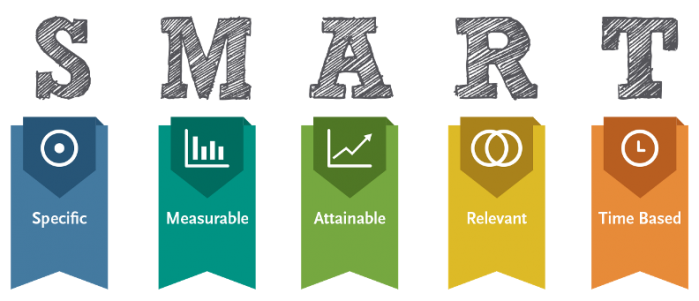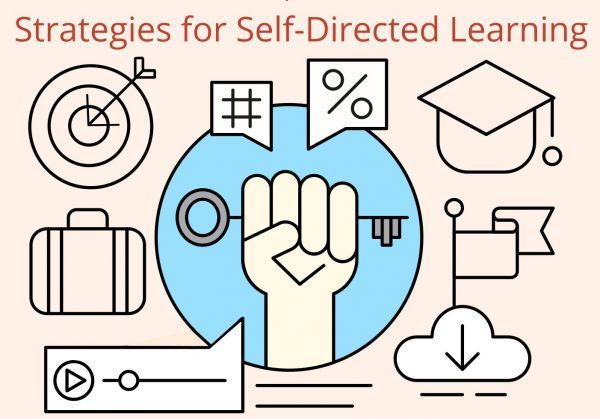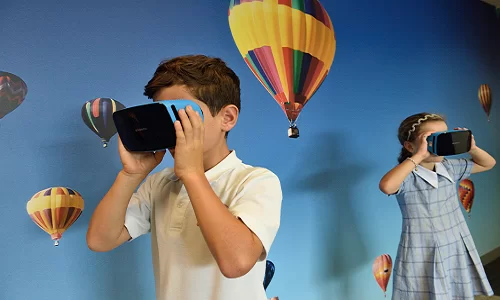Self-Directed Learning, also known as SDL, can be best described as a self-sufficient learning process where the learners can take charge of their own learning, through setting personal learning strategies, goals and targets, and then executing them in a set period of time.
In our previous Self-Directed Learning article, we familiarized our readers with the basics of self-directed learning, as well as provided an insight into what the approach of self-learning offers its disciples. Through this article, we offer some effective strategies for self-directed learning to gain or enhance a new skill.
Self-Directed Learning Strategies for Teachers
1. Open Questioning
Preparing lesson plans that include high-order, open-ended questions is a powerful medium to engage students and stimulate their curiosity. This eventually leads them down the path of self-directed learning.
Develop questions that compel students to think critically, analyze, and research. Using open-ended questions to introduce different elements of the lessons, instead of direct objectives, opens the door for discussions and debates. This method allows immediate feedback on students’ understanding and knowledge. It also enforces independent thinking.

2. Hybrid or Blended Style
This method of learning primarily focuses on combining the teacher’s interest and curriculum with the needs and interests of the students. This is done to develop a student-centered learning environment.
Engage students in determining learning goals and forming lesson plans. This stirs a sense of responsibility in them toward learning.
3. Encouraging /Introducing Technology in Classroom
Technology surrounds us at all times. Incorporating it as a tool for education is an effective approach toward creating a dynamic learning environment. Technology widens the horizons of learning beyond the classroom and gives students a chance to engage themselves in the process of learning in a creative manner. Learning comes to them internally when it targets their interest. In this way, it supports active learning. Internet, then, becomes their substitute teacher.
Create assignments that encourage them to use technology in order to find answers. This prompts them to delve further into the subject. Also, using media in the classroom helps make learning fun.
Self-Directed Learning Strategies for Learners
1. Smart Goals
Identifying the final goals is the first step toward starting self-directed learning, but this is not where it ends. It is crucial to create goals for each step. Losing focus is quite easy; short-term realistic goals help in staying focused and also boost the learning process. Using the SMART framework is one of the most efficient techniques, to begin with.
SMART is abbreviated for:

Specific: Be specific about what you want to gain. Do not settle for general goals.
Measurable: Create goals in a manner where you can track your progress.
Attainable: Create realistic goals, challenge yourself, but do not make it impossible for you to accomplish them.
Relevant: Ensure that the goals are relevant to you and are aligned to what you want to achieve. Create reasonable goals that will motivate you.
Time-bound: Set deadlines. Time limits help you remain focused and determined.
2. Mix and Match
Self-directed learning provides the flexibility of choosing a method of learning that is suited to individual needs.
Therefore, it is critical to analyze the learning process employed and choose the methods that align with the learner’s interests. Different subjects require different approaches. Hence, select the most suitable one. Additionally, these can be modified along the way.
3. Productive Learning Mindset
Developing an optimistic and never-give-up attitude is essential for self-directed learning, which is tested frequently at every curve of the learning journey. Learners will have to come to terms with the fact that failure is a part of growth.
Keeping faith in one’s abilities and believing that one can accomplish their goals is a requisite for a fruitful self-directed learning experience. What’s more, learners will have to overcome one of the biggest bane of learning – procrastination- and move ahead with determination and a strong, dedicated mind that stays focused.
4. Sandbox Method
Step 1: Build Your Sandbox
It is advised to create a place where one can experiment and build on their skills. It will motivate them to work more diligently. Share any completed work with peers, teachers, and family from the very beginning. This will help in overcoming public fear and provide valuable feedback at the same time.
Step 2: Research
To master a skill, regular research must be diligently performed. The boundaries of the sandbox will expand upon trying new things and mastering them. The immediate resources of research are books, online courses, blogs, forums, etc.
Step 3: Implement and Practice
Practice as much as possible in a progressive manner. Self-directed learning negates “naïve practice”, where repeating the same things incessantly is often encouraged. Instead, it promotes the learning of fundamentals and then applying them in a variety of scenarios. Furthermore, this will open cracks in learning and provide a chance to fill those gaps.
Step 4: Get Feedback
Constructive criticism offers opportunities for growth. Finding someone who can provide effective feedback about learning goals, progress, and the work done goes a long way in making any self-learning project successful. It will also help identify any potential shortcomings in the learning strategies employed. Thus, mentors, teachers, or experts of the targeted subject serve as excellent guides for self-directed learning.
Step 5: Continue and repeat
Any obstacle in learning should not stop one from the pursuit of learning. Receiving constructive feedback and working in the areas of development help the learner to master the concept. The shortcomings and failures should not deter the learner from continuing, even if it means starting all over again and making the same mistakes. Self-Directed learning encourages students and teachers to gain experience and work out ways to improve to acquire an in-depth understanding and thorough mastery of the subject.
Step 6: Have fun learning!
Learning should not be considered a solely academic affair with an objective to achieve. It should also be seen as a course of development as an individual. Enhancing skills and gaining knowledge is one aspect of learning, whereas developing individuality and gaining experience while doing so is another. The course of learning should be immensely enjoyed to support development.
Self-Directed Learning encourages the students to actively participate in the learning process and take responsibility for their own learning. It is a constructive approach to learning as it involves critical analysis of growth and development in the parameters of learning. This is even more essential as the analysis is undertaken by the learner themselves. Despite being reined by the student, the self-directed learning process lets the teacher play an important role in the process. Therefore, it is essential for them to guide the students to use effective strategies to achieve better results.
Image Credits: Research Vectors by Vecteezy
Research Credits: Discoverpraxis
Visit out blog for further reading about learning techniques and teaching methodologies. Create.Engage.Inspire















